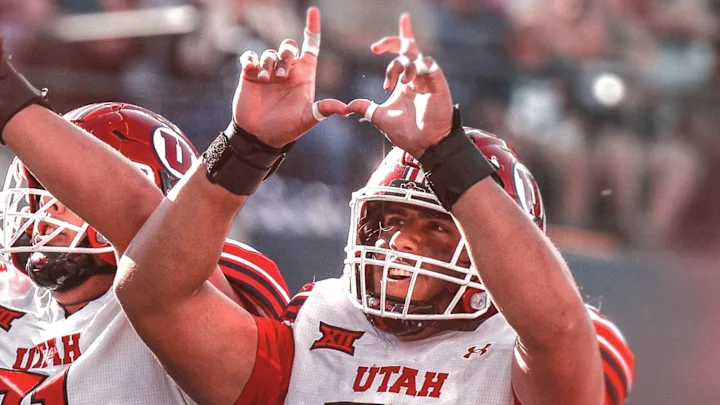How Many College Football Teams Are There? Top Programs with the Best Graduation Rates
How many college football teams are there? The simple answer is more than 650 when every division, conference, and association is counted. That figure can feel overwhelming to fans trying to keep track of all college football teams, and it can be even more confusing for student-athletes searching for the perfect fit. Long before kickoff, smart recruits look at a school’s classroom stats as closely as its win-loss record. While using a service to write my paper can help with assignments, having a solid campus support system is key to actually completing your degree.That’s why this article breaks down the football colleges that pair on-field wins with high graduation rates. From powerhouse names in the Power Five to hidden gems in smaller conferences, each highlighted college football team shows that competing for national titles does not require sacrificing classroom goals. By exploring these balanced football programs, families can see how academic success lines up with bowl trophies and football player rankings.
Why Graduation Rates Matter as Much as Win Totals
In college athletics, coaches often say that the real scoreboard is the diploma wall. A school’s graduation success rate, or GSR, tells parents and recruits whether athletes actually finish what they start. High numbers show that the football programs offer tutoring, study halls, and flexible class schedules. Low numbers can signal transfer problems, eligibility issues, or a lack of academic advising. Because scholarships usually last only four or five years, finishing a degree on time is critical. The NCAA tracks both the six-year federal rate and its own four-class GSR, giving fans a fair way to compare schools of different sizes. When administrators celebrate a 90-plus percent rate, they are proving that chasing bowl bids and classroom credits can happen side by side. Analysts often list these stats next to win-loss columns, reminding everyone that a great season means little if seniors walk away without a diploma. In other words, banners fade, but degrees pay lifelong dividends.
From Data Sheets to Depth Charts: Tracking Academic Wins
Digging into statistics can feel dull, yet it is the best way to see which football colleges are getting the job done in class. The NCAA’s public database lists graduation outcomes for every division, making it possible to scroll through all college football teams and compare apples to apples. While numbers shift each year, a few patterns repeat. Private universities often post higher marks because of smaller class sizes and strong alumni funding. Military academies rank near the top thanks to strict discipline and mandatory study periods. Some state schools, especially ones with large research budgets, also shine because they invest heavily in counseling centers. Reporters usually combine this data with football player rankings to create balanced leaderboards. A team with top-25 talent and a 95 percent GSR earns extra respect from voters and bowl committees alike. Fans who ask, “How is my favorite college football team doing in the classroom?” can answer that question in minutes with these free tools.
Power Five Programs Leading the Classroom Charge
The headliners of the Power Five—ACC, Big Ten, Big 12, Pac-12, and SEC—receive constant TV time. Less discussed is how well many of these giants educate their athletes. Notre Dame, often independent but playing an ACC schedule, boasts a GSR above 95 percent year after year. Northwestern and Stanford sit close behind, proving that admission standards do not prevent national ranking ambitions. In the Southeast, Vanderbilt and Florida both clear the 90 percent mark while still facing rugged conference slates. Clemson, a recent playoff regular, has quietly raised its numbers into the high eighties by adding new learning specialists. Even Ohio State, famous for massive stadium crowds, posts strong federal rates above the national average. These showings highlight that elite recruiting classes can exist alongside elite academic support. When fans tune in on Saturdays, they watch rosters built to win. Yet those same athletes are logging serious library hours from Sunday through Friday, ensuring senior day celebrations include caps and gowns.
Mid-Major Schools Raising the Bar
Outside the bright lights of the major conferences, several mid-major programs are quietly turning heads in cap-and-gown statistics. The American Athletic Conference features Tulane and Navy, each boasting graduation success rates in the mid-90s while still appearing in national polls. In Conference USA, Rice University turns its Houston classrooms into a launching pad for future engineers and linebackers alike. The Mountain West’s Air Force Academy maintains near-perfect marks, reflecting the discipline woven into cadet life. Even the MAC contributes standouts; Miami (Ohio) consistently graduates more than nine out of ten scholarship players, a figure many Power Five giants envy. These institutions prove that a smaller budget does not doom a football program to academic mediocrity. Instead, tight-knit campuses can create mentoring networks that rival any big-city facility. Recruits who value both leadership roles and laboratory time might find these schools ideal. After all, national exposure is great, but the ability to list a completed degree next to a bowl ring is priceless.
When Football Player Rankings Meet Classroom Rankings
Media outlets love to publish preseason football player rankings, measuring speed, strength, and highlight-reel potential. Yet those glossy lists seldom note whether the same stars sit in the front row of statistics class. Comparing athletic charts to academic leaderboards reveals some interesting overlap. Quarterbacks from Duke, for instance, often appear in both sets of rankings thanks to the school’s 90-plus graduation rate. At Wisconsin, offensive linemen dominate NFL draft boards while the program claims an Academic Progress Rate that tops the Big Ten. The takeaway is simple: disciplined study habits fuel on-field intelligence. Linemen who can solve complex blocking schemes usually have the focus to solve calculus problems as well. Scouts even admit that players graduating on time carry fewer off-field risks. That means a high classroom standing can raise a draft stock just as much as a fast forty-yard dash. For athletes with long-term goals, chasing twin rankings—academic and athletic—offers the safest playbook.
Balancing Practice, Travel, and Papers
Maintaining elite graduation numbers requires more than just a tutoring lab. The calendar itself can become an opponent. Coaches often schedule two-a-day workouts, film study, and community events, leaving thin margins for essays and lab reports. Travel days add another hurdle; cross-country flights on Thursday can wipe out valuable class time. To counter these challenges, successful football programs design study plans that move with the team. Laptops loaded with course material, virtual office hours, and proctors who ride on charter buses keep learning continuous. Some universities even partner with professors to record lectures so athletes can watch them from hotel rooms. Others designate “no-travel majors” only for freshmen, ensuring a lighter load during the first season. These strategies show that finishing assignments is a shared duty among faculty, advisors, and athletes. When professors, coaches, and players collaborate, missing a midterm becomes as uncommon as missing an extra point. The result is a culture where academic victories feel as normal as fourth-quarter comebacks.
How Many College Football Games in a Season? Managing the Grind
Most fans recognize the 12-game regular season played by Football Bowl Subdivision teams, but the total climbs when championship weekends and bowl invitations are added. A contender can face as many as 15 contests across four months. Lower divisions and the Football Championship Subdivision may play up to 16 thanks to extended playoff brackets. When calculating how many college football games in a season, support staff also count bye weeks packed with scrimmages and weight sessions. Each added kickoff equals hours of prep, travel, and recovery, squeezing study schedules even tighter. Schools with impressive graduation rates treat the season length as a math problem rather than an excuse. They build detailed weekly grids that pencil in reading time next to film review. Athletic trainers coordinate with professors to schedule exams before long road trips, reducing last-minute cramming. By treating every calendar block as precious real estate, these colleges prove that stacking wins and passing finals can coexist, regardless of how long the season runs.
Choosing the Right Campus: A Checklist for Recruits
Prospective athletes often focus first on uniforms and stadium noise, yet the wiser strategy is to evaluate academic fit. A simple checklist can help. First, verify tutoring hours and writing labs; a strong support network beats late-night panic. Second, compare graduation rates not only for the team but for the entire student body to gauge campus culture. Third, ask to meet advisors who will map class schedules around practice blocks. Fourth, review internship pipelines, because a long career may await after the final whistle. Fifth, explore housing options; living near libraries can shave minutes off daily commutes. Finally, study travel demands. A coast-to-coast conference slate looks glamorous but eats study time. When weighing offers, recruits should remember there are hundreds of options—remember, earlier the question was how many college football teams are there?—so settling is unnecessary. By checking each box and prioritizing degrees, a student-athlete can select a college football team that prepares them for both draft day and graduation day.
Bringing It All Together: Degrees, Dreams, and Drafts
The stories above prove that winning and graduating are not opposite goals but twin pillars of a healthy athletic department. Whether the campus is a Power Five titan or a mid-major jewel, the blueprint stays the same: recruit driven students, surround them with experienced advisors, and protect study hours the way a quarterback protects the ball. When stakeholders ask, “Who tops the charts?” they should check both the win column and the diploma stack. Schools that appear on each list deserve the loudest applause. Fans, too, can help by praising academic honors during watch parties, not just last-second touchdowns. Doing so changes the conversation and nudges administrations toward even higher marks. So the next time headlines debate all college football teams vying for playoff spots, remember to glance at their classroom stats as well. Championships sparkle, but framed degrees shine even longer. The best football programs understand this truth and ensure that every senior walks away with a ring, a résumé, and a future.




